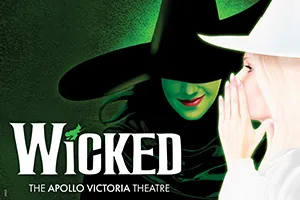You don’t get many second chances in life. Being taken back by the ex you cheated on. Being promoted by the boss you embezzled. Such chances are rare. They should be grabbed with both hands.
Gough gives a performance that is beyond compare.
A play returning to the West End after almost a decade may not be on quite the same life-changing level. Nonetheless, for anyone with even the slightest interest in theatre, this second chance to see People, Places and Things – first run in 2015 at the National and Wyndham’s Theatres – offers an opportunity you would be insane to miss.
Intensely human
People, Places and Things is about addiction. It’s about struggling to show our best selves. It’s about standing out and fitting in. It’s about honesty and secrets. It’s hilariously funny and painfully sad.
Duncan Macmillan’s script – unchanged bar a sprinkling of hard-to-ignore events such as Covid, Brexit, Trump – manages to be all these things. Yet it never feels confused and it never loses focus. His characters are flawed, their reality flexible. It is intensely human.
The story is of Emma, an actress we first see fumbling through a performance of The Seagull. Our confusion grows as her grasp of reality seems to lessen. “I am a seagull. No, that’s not right. I am an actress” she says as the actress playing the actress in Chekhov’s play.
As she collapses ‘on stage’ on stage, the set explodes. Techno music suddenly pounds. Emma is dancing, writhing messily with strangers. She drips chemically fuelled sexual energy.
Another explosion and we’re in the reception of an austere medical building. Emma is checking herself in. She does a line of coke off the desk. On the mobile, she begs her mother to clear her flat of "temptation" before she returns home. “I’ll stop calling you a cunt when you stop being so cuntish” she hollers, a childish petulance given adults’ vocabulary.
She moves with the confident messiness of the addict, trying to prolong a high that long since became devoid of its original euphoria. It’s clear her detox is driven by necessity, not choice.
The frenetic energy of the opening is used to great effect throughout the play. It puts us into the head of an addict and makes us see things from her perspective. It is exciting, discomfiting, jarring and disruptive. The experience is one that defines theatricality. People, Places and Things should only ever be seen in the theatre.
Imperfect truth
We follow Emma as she deals with her addictions. Though “deals with” suggests an arc of struggles, soul-searching, self-acceptance, and salvation. In People, Places and Things, nothing is quite so neat.
Emma rejects the spiritual backbone to rehab’s “twelve step programme.” She demands her therapist be “at least as intelligent” as her if she is to be useful. Group therapy is quickly rejected. All she wants is a certificate proving she doesn’t pose an insurance risk for potential employers.
There is no proselytising of sobriety in Macmillan’s script. It even suggests that with so much pain in the world, we owe it to ourselves to enjoy what we can, when we can, how we can. And drugs and alcohol play a clear role in that enjoyment.
We’re often shown sobriety as the solution to problems deemed antisocial. A perfect world where entrance is a prize coveted by the recovering addict. People, Places and Things paints the imperfect truth.
We see people (addicts) in nightclubs, dancing with strangers, feeling the vibrations of the pumping bass. We see people (non-addicts) drinking orange squash out of plastic cups, soberly singing karaoke. Where would you rather be? Which people would you rather be with?
Our moralistic selves may say one thing. The usual interval rush to the bar suggests another.
A theatrical Cerberus
Along with the refreshingly adult tone of the script, what makes this production unmissable is the triptych of talent that brings it to life. Director, designer, and performer come together as though a theatrical Cerberus. Remove one of their heads and this beast would surely suffer.
Director Jeremy Herrin creates chaos before suffusing to silence in a heartbeat. Bunny Christie’s set secretes panels that allow props and people to melt on and off the stage.
And what is left to say about the incredible performance Denise Gough somehow manages to give every night?
The role of Emma has many layers, and we are never sure we see them all removed. She tells us of the child abuse she suffered, which never happened. She seems devastated by her brother’s death, which happened yesterday, recently, many years ago, or never. Emma isn’t Emma’s real name.
Gough takes this character, drawn from lies, and embodies her with truth. Her performance is painfully raw. She makes us hate her, yet still root for her. For the two and a half hours she is constantly on stage, Gough controls our emotions. With a flick of a switch, she makes us laugh. Another flick and we cry.
We gush about performances being ‘memorable.’ Often these are compliments borne of celebratory hyperbole. But trust me, Gough gives a performance that takes the hype and then surpasses it. If you’ve seen it, you’ll know. If you haven’t, you should.
Beyond compare
Since her original performance in People, Places and Things, Gough has done good work. In London and on Broadway, she won acclaim for her role in Angels in America. She also won awards. After seeing her play Emma, the writer of Andor (the Star Wars prequel to the Star Wars prequel) offered her the role of Supervisor Medro. Her talent has been deservedly acknowledged.
But, whether it’s a good thing or not, in People, Places and Things, Gough gives a performance that is beyond compare.
If you didn’t see this play on its first outing, be grateful to have this second chance. It will be your last.
And if you did see it, I can’t think of any reason why you wouldn’t want to see it again.


















